It is a warm summer afternoon in Meerut, and the city is going about its usual business. There’s the cacophony of shoppers bargaining at Sadar Bazaar, while chaos ensues at Ghanta Ghar. The buzz of clanking metal fills the air at Kainchi Bazaar, as does the aroma of delicious kebabs at Bachcha Park. Between all the bustle and chaos, the Meerut Cantonment — second largest in India — is perhaps the quietest. Its well-paved roads are dotted with army quarters, parade grounds, and memorials that truly embody the town’s defence heritage. But it is an unlikely Shiva temple, with a towering white shikhara, that is the most historically significant in this part of town. Its marble floor glistens under the peaking afternoon sun, upon which stands an old priest offering prasad to a group of soldiers, who are seemingly involved in a serious discussion. This scene is rather reminiscent of the events that had unfolded on these very premises over a century ago. As the country raged for freedom, the walls of Meerut’s Augarnath temple witnessed the first conversations that sparked the revolution in 1857. [caption id=“attachment_7087161” align=“alignnone” width=“825”] 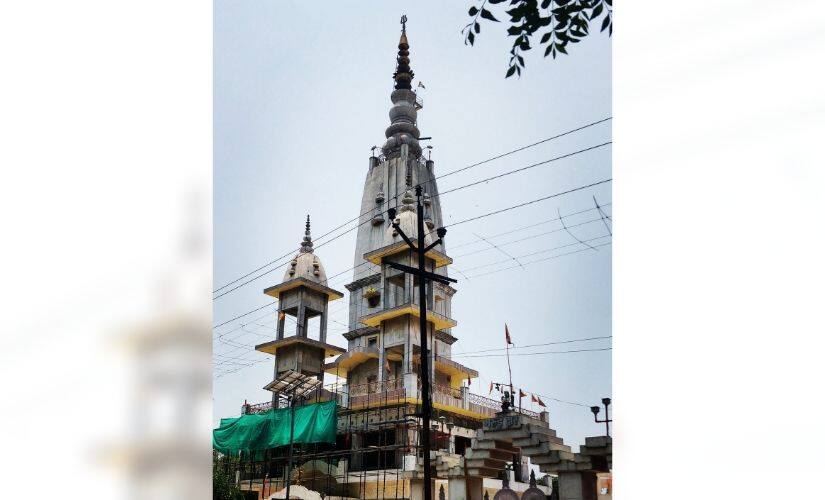 The Augarnath temple earlier consisted of just a Shiv-ling, surrounded by four walls, behind one of which was a well. The temple was elaborately restructured in the 1960s and is still undergoing some construction work.[/caption] While some inscriptions suggest the temple to have been built by Krishnadevaraya of the Vijayanagara kingdom, the priests here believe otherwise. “The Marathas built several temples in this region three centuries ago. They would come to Augarnath to thank the god after any victory,” states Sudhanshu Tripathi, temple’s head priest, whose forefathers have been serving at Augarnath for generations. The Augarnath temple, locally known as the ‘Kali Paltan Mandir’, has an interesting story behind its name. “During the times of the British, the Indian soldiers in the regiment were called the ‘Kali Platoon’ (black army). Since the Augarnath temple was located close to the soldiers’ quarters, it came to be called as the ‘Kali Paltan Mandir’,” says Tripathi. In the 1850s, the Meerut Cantonment had around 2,234 Indian sepoys divided into two infantries (11th Native Infantry and 20th Native Infantry), along with one cavalry regiment. The temple lay at a strategic point, just on the crossroad of these two infantry lines. [caption id=“attachment_7087171” align=“alignnone” width=“825”] 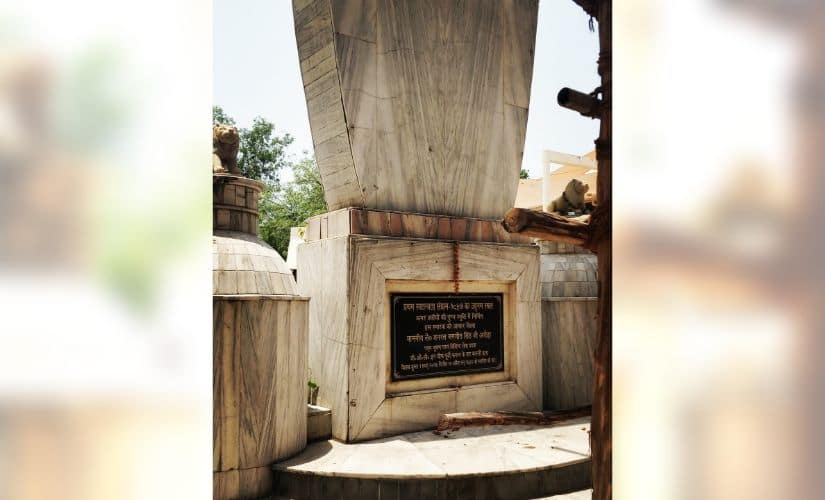 Over the ancient well, a memorial has been constructed to mark the temple’s significance.[/caption] The sepoys would come to the temple to offer prayers and fetch water from a well on its premises. The conversations they had were only limited to exchanging pleasantries, until a fakir came along and stationed himself in Meerut in April 1857. “This fakir was part of a network of Sadhus and Maulvis who were travelling through the Indian countryside. They were acting as messengers, planners, and possibly also leaders of the Great Revolt of 1857. This particular fakir, whose name hasn’t been found in any record, came to Meerut from Kalka, having witnessed the uprising at Ambala Cantonment on the way,” states Amit Pathak, a Meerut-based historian and author of 1857: A Living History. At first, the fakir set up his camp in the area named Surajkund. He instantly gained popularity among the sepoys and locals, narrating inspirational stories of his travels and spreading ideas of liberation. This, however, made the British rather suspicious, and soon after, the fakir was ordered to evacuate the camp and leave. As one of the depositions note recovered from Meerut says: “About 25 days before the mutiny, this fukeer, a Hindoo, came and took up his abode in the 20th NI Lines, in the huts of the 4th company.” He was often found meditating at the Kali Paltan Mandir. These incidents occurred at a time when the British had introduced new cartridges, whose seals had to be bitten off by the soldiers in order to remove them. This was met with a huge backlash, as the seals were made of cow and pig fat. When the sepoys went to the Kali Paltan Mandir to drink water from the well, they were supposedly stopped by the fakir, who felt the men had become impure after biting into animal fat. [caption id=“attachment_7087181” align=“alignnone” width=“825”] 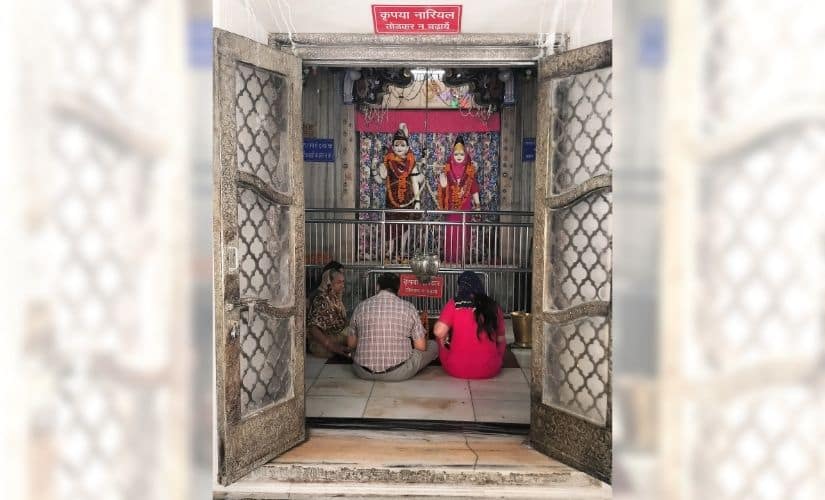 Almost all Meerut locals are aware of the historical significance of the temple. It’s not only site for pilgrimage, but a tourist attraction as well.[/caption] The Barrackpore agitations had been sparked off by the same controversy, and once the news reached Meerut, the fakir inspired the soldiers at Kali Paltan to revolt against the British. Even though the temple was frequented only by Hindus, religious barriers barely existed back then. “There was good communication amongst Hindu and Muslim sepoys, both of whom who wanted to resist the British rule. The seed of communalism to ‘divide and rule’ was only planted after the 1920s by the colonisers,” Pathak explains. Thus, plans and strategies for the first war of independence that were being discussed in this small temple slowly began to spread to other parts of the country. While daily meetings continued, messages were sent to Indian soldiers in the Delhi Cantonment. Soon, the British became aware of the rising chaos and resentment among the native forces. However, what truly triggered this revolt was an event that unfolded near a church. The magnificent St John’s Church located in the European side of the cantonment — now part of Lekha Nagar — is north India’s oldest church, built in 1821. On both sides of the church lie huge barracks — the old British infantry and cavalry lines equipped with artillery that was used to court-martial 85 Indian sepoys at the infantry ground in Meerut on 9 May, 1857. It was a punishment for all those who had dared to dissent against the British. The soldiers of the three native regiments were brought for the parade without ammunition. “The sepoys wept during the parade of the 9th of May. For more than an hour, the troops stood motionless, while the felon shackles were being methodically and of necessity slowly hammered on the ankles of the wretched criminals,” states an account in Alfred Robert Mackenzie’s book, Mutiny Memoirs: Being Personal Reminiscences of the Great Sepoy Revolt of 1857. [caption id=“attachment_7087281” align=“alignnone” width=“825”] 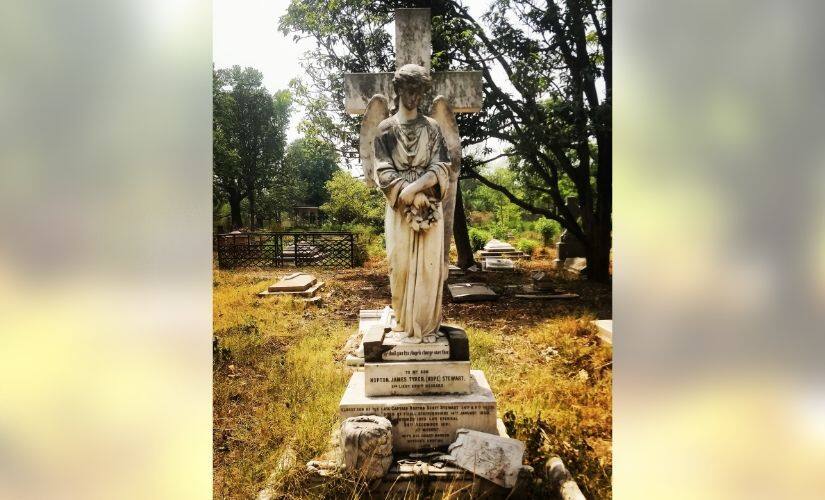 A dilapidating tombstone of a British officer who passed away in 1891 in Meerut.[/caption] It was on 10 May, a sweltering Sunday, when the great revolution of 1857 began. None of the Indian servants had reported for their duties after facing humiliation the day before. The British had come down to Sadar Bazaar in the evening to spend some time. It was here that the armed Indian soldiers, Indian policemen, and even the locals, started attacking the British unexpectedly, shouting and inviting everyone to join them in their fight for independence. The nine British officers that died on that day are buried at the far end of the St John’s cemetery, just a little beyond the church. With overgrown shrubs and a thick cover of trees, the churchyard has beautifully carved tombstones of Mughal and colonial architecture. An old man named Robinson, the caretaker of the graveyard, lives here with his family in a small one-room house. “Look”, he says, reading from a pale yellow grave of a certain Donald McDonald. “Captain of the 20th regiment who was killed by his men on the 10th of May 1857, 35 years, with his wife Louisa Sophia aged 30 years, who was barbarously murdered the same night while trying to make her escape with her three infants from her burning house to the European Line.” Hardly anyone visits the British cemetery now. “Up until a few years ago, the families of the officers would come to pay their respects. But not anymore," Robinson informs. The cemetery struggles with its upkeep due to lack of funds, but the Augarnath temple — a landmark in Meerut — has seen the construction of a Krishna temple on its premises. While the Shiv-ling in the sanctum sanctorum is still original, the well has been converted into a memorial detailing the temple’s significance. Augarnath’s facade has also been restructured. [caption id=“attachment_7087191” align=“alignnone” width=“825”] 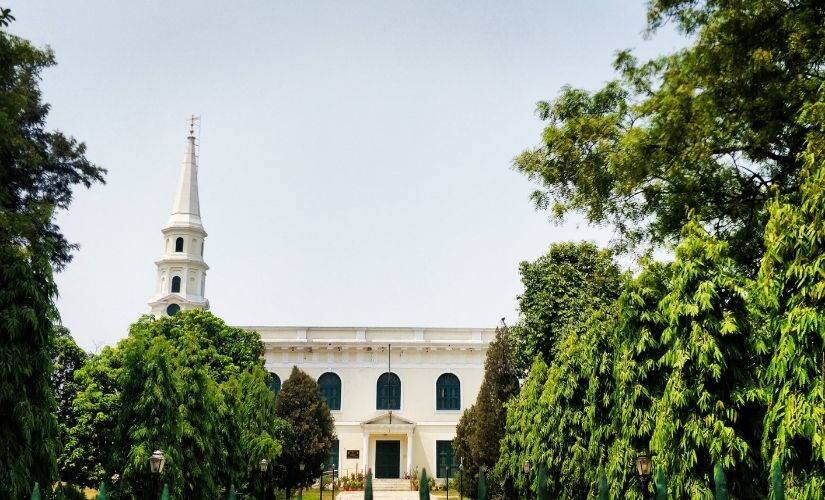 The St John’s Church in Meerut is the oldest church in north India.[/caption] However, can this space, where dissent first sparked off a revolution, ever allow another — perhaps an ideological one? Over the last decade, Meerut’s socio-political fabric has been fraught with communal tension, and the deteriorating quality of public utilities has created disparities amongst masses. “Meerut, with its peculiar place in the anti-colonial, trade union and farmers’ movement history of India, has continued its militant streak in the cultural space, but has deteriorated ideologically. Due to privatisation of education and rampant unemployment in the region, the youth is in a state of precarity, and is desperately looking for socio-economic and political solutions. However, it is yet to be seen how the youth carves out a future for itself, especially when it comes to a revolutionary break from the recent past of caste-communal divide," says Prabudh Singh, a Meerut-based scholar pursuing his doctorate in sociology. Aman Deep Singh, a 25-year-old lawyer and a regular visitor at Augarnath temple, agrees. “Dissent is already seeping through social media as so many students and youth are asking for better utilities from the sleeping government.” Barely three months ago, the law students at Meerut’s Chaudhary Charan Singh University protested against the staff for providing question papers only in English. [caption id=“attachment_7087221” align=“alignnone” width=“825”] 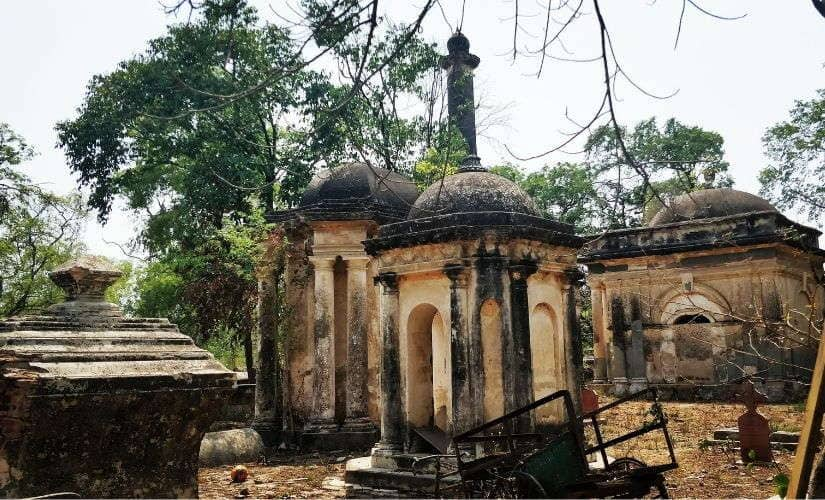 The tombstones and mausoleums here are of Victorian and Mughal architecture.[/caption] As dissent continues to brew in small pockets across the historical city, rays of the setting sun flood its lanes and touch the shikhara of the Augarnath temple. Its significance in the Indian freedom movement is etched in the hearts of the locals. But only time will tell if the temple’s revolutionary spirit will continue to inspire people in the turbulent days to come.
The Augarnath temple, locally known as the ‘Kali Paltan Mandir’, has an interesting story behind its name. During British rule, the Indian soldiers in the regiment were called the ‘Kali Platoon’ (black army). Since the temple was located close to the soldiers’ quarters, it came to be called as the ‘Kali Paltan Mandir’, which eventually went on to become a launchpad for the Great Revolution of 1857.
Advertisement
End of Article


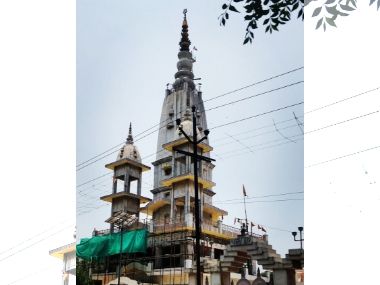)
)
)
)
)
)
)
)
)



